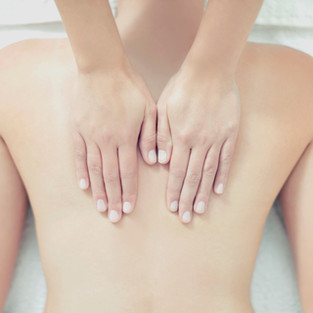Dry Needling? Acupuncture? Which one should I get?
- Rebekah Loh

- Oct 6, 2019
- 4 min read
Updated: Jan 4, 2020
Ding ding! Who's up for a controversial showdown? Get ready to rumble, I'll be going through the ins and outs of dry needling and acupuncture. Whilst I will do my best to explain in an unbiased manner this issue is very close to my heart and as I was researching I came across some things that got my liver qi really going. However I do believe there is space for all medical professionals and I've personally worked with fantastic GPs, osteos, physios and chiros who have mutual respect for each others professions. So let's begin!

Dry Needling vs Acupuncture
What is dry needling?
Developed by Janet Travell and David Simons Dry needling is a term that was derived in the early 1940s. Originally the technique involved the use of hypodermic needles to stimulate and/ or inject trigger points or myofascial trigger points with substances such as corticosteroids, saline solution and analgesics. However, the term dry needling was first coined by Dr Travell in her book ‘Myofascial Pain and Dysfunction: Trigger Point Manual’ as a different technique that involved no injection of substances (called wet needling) but focused on needling the myofascial trigger point. You will most commonly see your local chiro, physio or osteo offering dry needling.
What is a Trigger Point or Myofascial Trigger Point?
Coined in 1983 a Trigger Point or Myofacial Trigger Point is essentially a site of irritation within the muscle fibre which can form a knot or small area of muscle tightness, pain or contraction. Another term Intramuscular Stimulation (IMS) was developed by Chan Gunn in the 1970s and is a technique associated with needling tight bands of muscle and creating a nerve response, irritation or muscle twitch.
Why call it dry needling instead of acupuncture?
The term ‘dry needling’ was created by western based practitioners who believed Chinese medicine terminology was seen as mystical and ‘unscientific’. However, it is important to recognise that the ancient Chinese literature is over 4600 years old and it would be trying to understand and apply Shakespearean language today.
However unscientific is far from the truth as recent research has shown evidence of acupuncture and it's positive effects. In addition, more and more studies are discovering that acupuncture does indeed follow scientific principles. More information can be found on the previous blog here.
What is the difference between dry needling and acupuncture?
There are no differences between dry needling and acupuncture! The techniques described as ‘dry needling’, ‘intramuscular stimulation’ or ‘myofascial trigger point’ needling are specific techniques that have been described in classical and contemporary Chinese medicine literature. Trigger points are defined in these texts as ‘Ashi Points’. The first reference of ashi points – which literally translates as ‘Ah yes!’ – was by Sun Simiao in his book Qian Jin Yao Fang (Thousand Ducat Formulas) in 652A.D.

Ashi points are defined as points that have muscular tension and are tender to touch. These points are needled in such a way as to create a twitch response in the muscle called "de qi" describing the arrival of qi. This term was described in the ‘Yellow Emperor’s Internal Canon’ which is believed to have been written in 100B.C.
In short, this is not a new technique developed in the 1930s, dry needling is essentially a term that is used to describe a technique that has been used in Chinese medicine acupuncture for over 2000 years. Dry needling is essentially a branch of acupuncture.
THE WINNER: Dry Needling, or Acupuncture?
The bit we've all been waiting for. What is the best option? Ultimately this is just an opinion and I am here to guide you and provide you with all the information needed in making the right decision for you.
Training?
Dry needling practitioners require as little as 16 hours in training before a practitioner can be qualified to perform the practice.
In saying that, I appreciate that medical professionals such as doctors, chiropractors, osteopaths, and physiotherapists have received prior medical training in their respective fields for at least 3 years. However, in my opinion this does not compensate for the lengthy theoretical and practical training acupuncturists receive before being qualified to perform acupuncture.
Registered acupuncturists have significantly more training in acupuncture and dry needling as this is their primary modality, not an add on. On average a registered acupuncturist would have approximately:
150 hours of Anatomy and Physiology outlining location of organs, nerve structures and arteries
100 hours of point location including how to needle in order to prevent issues such as organ puncture, nerve damage, artery damage and pain.
200 hours of needling training
400 hours of supervised clinical practice
As I said before, I believe that there is a place for dry needling, and acupuncture.
Dry needling is fantastic in the treatment of musculoskeletal problems. However I believe for individuals that are interested in holistic care that treats the root of the problem as well as the symptoms, Chinese Medicine can offer acupuncture and so much more.
For those who are still conflicted, good new for you is that I can do BOTH dry needling and acupuncture. So there really isn't any excuse for you to try a session!
Want a treatment? Still unsure or have more questions? Book in a free 15 minute health screen to see how I can help.










Comments